Otl Aicher’s Iconic Brand Design for the 1972 Olympic Games: Learnings & Triggers for Discussion
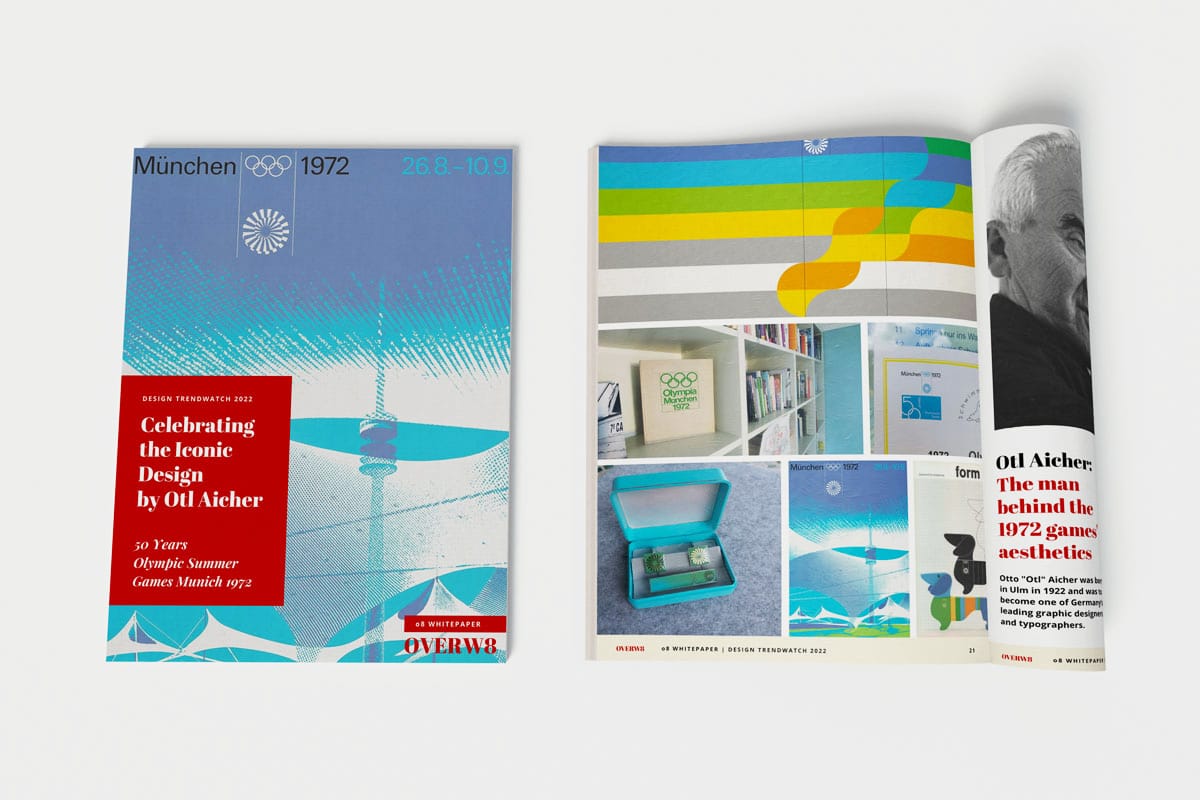
Celebrating the Iconic Brand Design by Otl Aicher: 50 Years Olympic Summer Games Munich 1972
This article is part of something bigger – i.e., our “design trendwatch whitepaper” celebrating the iconic brand design German designer Otl Aicher and his team developed and filled with life. Would you have guessed a story about design would include the story of positive change, of evil roots providing the soil to silently but effectively build something new? We were also as surprised as hooked – and we’re happy to share these timeless insights as inspiration for using great brand design as a way to build the future. Get to know more about it and maybe join us in that endeavor!
When I am working on a problem, I never think about beauty, but when I have finished, if the solution is not beautiful, I know it is wrong. – R.Buckminster Fuller
Design vs. Branding – where is the difference?
Sofia Luce Gallo
o8 Core Team
Brand Design & Visual Customer Experience
Design is a broad term that refers to the conception and creation of visual artifacts that serve to communicate something. Design can be a website as well as a soft drink label – it is used to express a message appealingly.
Branding is using design not only to tell a story but to visually describe a personality. Just as people have their physical connotations, a brand has its own visual rules (and not only that, hello tone of voice!) that must be applied in every facet of it.
Consistency is what makes a brand strong.
Kristin Reinbach
CEO o8
CEO, Head of Brand Creation & Business Building
So, design is creating something visual. It might be physical or just a layout element, it is something you can usually see. It could already exist in my brain, but you can’t tell what I refer to unless I get it out there and make it visible. This is what we use design for. Branding for me would be a bit bigger.
It is about creating a whole world, a whole atmosphere – and I think this worked in a very 360 way here for the 1972 Olympics.
There were the fonts, the layout aesthetic, certain imagery, buildings, and a clear color code – and that all applied everywhere with massive discipline – even in the showers of the Olympics village.
The 10 Principles of Good Design
according to Dieter Rams (Braun Designer) and commented by o8 team
1_Good design is innovative.
As we always say: Nothing is worse than boring other people. Do not do this, try to create somehing uniquw, no matter what. And don’t uses B2B or tech as excuse.
2_Good design makes a product useful.
Indeed a product and its attractiveness and usability rely heavily on good design – of the product itself, its packaging, its everyday use.
3_Good design is aesthetic.
This might seem obvious, it is not. If it just clicks, that is the moment where the balance between elements, whitespace and message just start to align.
4_Good design helps us to understand a product.
Imagine a product that give you no chance to recall how it looks – how many hours would you be looking for it in your flat?
5_Good design is unobtrusive.
Good design is never trying to dominate you or your brain. It can be exciting, triggering interest, but as a well cooked dish it should not get too spicy.
6_Good design is honest.
Good design will not sell you something for what it is not. It will help you to see at its core and perceive its value – and you should be able to rely on its underlying messages.
7_Good design is durable.
The 1972 Olympics aesthetics is probably the best example for it – “durable” being a equivalent for “timelessness”. 10 of 10 point to go to Aicher for that.
8_Good design is consequent to the last detail.
“The details are not the details. They make the design.”
Charles Eames
Nothing to add there.
9_Good design is concerned with the environment.
This is a very Yogi attitude as in Asteja and Apigraha (not taking anymore than you really need). The latter can easily be applied to packaging for example.
10_Good design is as little design as possible.
This reminds me always of the iceberg writing method Hemingway is cited for: You create a draft, then you refine and remove anything unnecessary. Distill to the max.
The role of the designer is that of a good, thoughtful host anticipating the needs of his guests. – Charles Eames
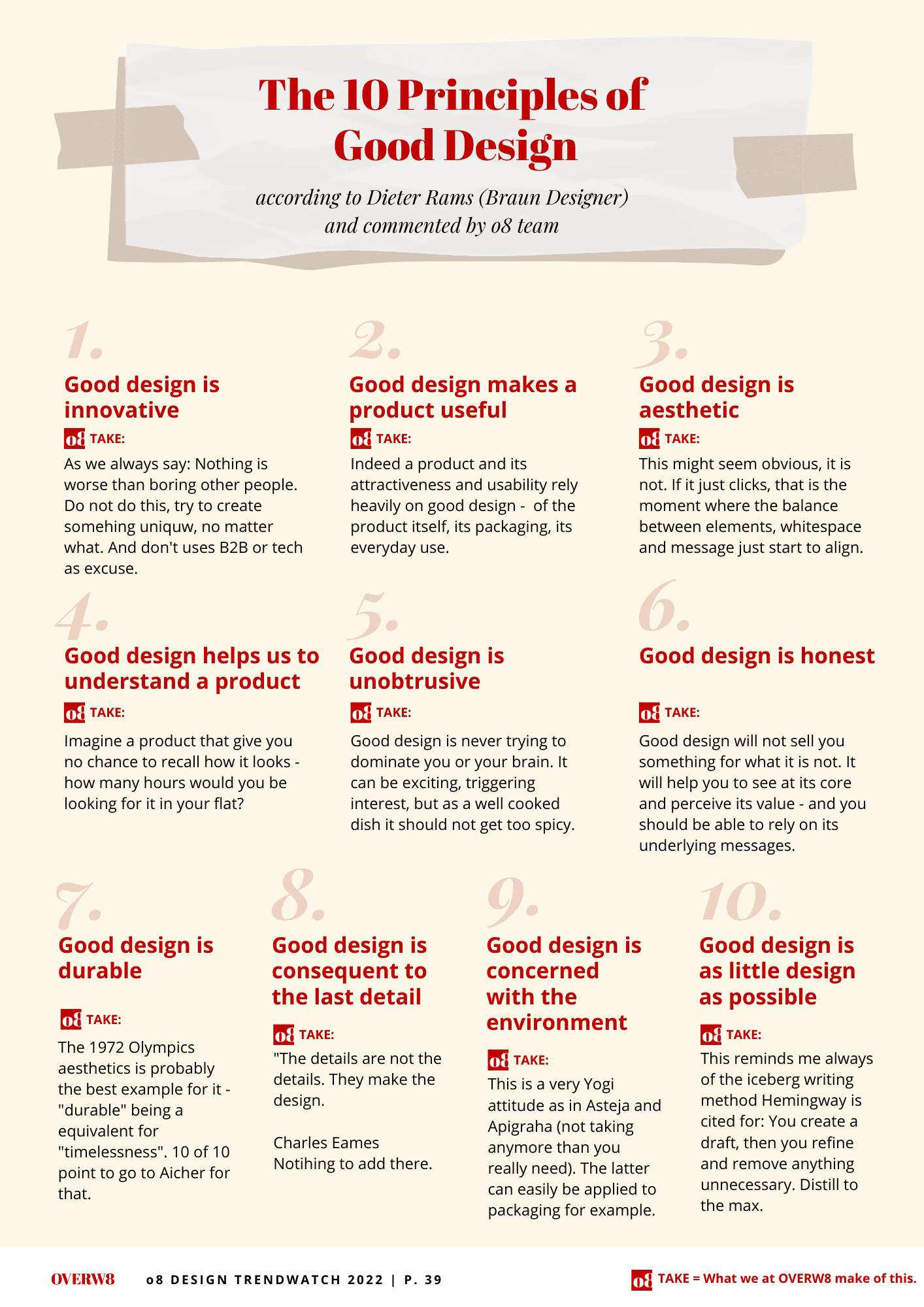
Truly great brand design helps to translate a vision into a language that everyone can quickly understand: into images, feelings, words, and atmosphere. It can give reality the first shape before it even exists; it helps shape the future. This might be why it is the main accomplice for any entrepreneur and startup team. – Kristin Reinbach
Food for Thought
- What about Reifenstahls movie: Does creating something like this contain a moral responsibility – or not?
- Does it makes sense to think about design before you know the brand values before you have a clear intention?
- Is the 1972 Summer Games design rather a true brand – even though it was ‘just’ called design?
- Did Otl Aicher ‘brand’ Germany – what do you think?
- How important was Aichers personal background for what and how he created and worked?
- Even though it seems close to perfect: What do you think could one even do better if one would approach it from a not just design, but also verbal communication approach?
Content preceeds design. Design in the abscence of content is not design, it’s decoration. – Jeffrey Zeldman
This is chapter 6 of 6 of our Design Trendwatch special about Otl Aicher and his iconic brand design for the 1972 Olympic Games in Munich – check out the other parts here:
Or, if you’d like to enjoy the full-blown beauty of this nicely layouted whitepaper, be sure to download it here now:
Legal Notice
This whitepaper and blog article series is a non-commercial publication in which we give an overview of what we consider a very inspiring topic. We invest a lot of time and money (and love) to create and share it for free.
Being about Otl Aicher and his work, it is per se a HUGE credit to his work; emphasizing the value of his work is the declared purpose of this document. It is built on our research (mostly online) and some private materials. Therefore, most picture resources in this whitepaper serve as quotes and were found in publicly available sources. In most cases, it is therefore obvious by the annotating texts to whom the credit goes.
For example, on p. 8, the movie poster clearly states this movie, and the picture on it stems from Leni Riefenstahl’s work; on p. 15, the works of Margarete Kögler, Ursula Wenzel, Ingeborg Schwarz, Anne Preiss, Eva Maria Koch are shown and described as such, on p. 13 works by Albers, Itten, and Peterhans are shown and credited “in situ”.
Anything with the Olympics looks (such as the main brand looks, the posted, etc.) is typically credited to its creator, Otl Aicher, the main protagonist this whitepaper is about.
In some cases, that still might be questioned, and one might state that the true credit should go to the then active creative team or, as in the case of the Waldi mascot, to Elena Wischermann. In cases like this, we did our best in a reasonable effort to make sure the creators are correctly credited; in other cases, one will probably never know exactly.
Lots of these events happened before the web and giving credit to team members or female colleagues simply was not considered so relevant.
The key visual and cover picture with the swimmers (changed in the meanwhile) is by Granger, NYC; we hold a license for its use via Alamy.
The brands mentioned here shall be credited, too, as they commissioned and enabled great work: Lufthansa, Braun, Sparkasse, Erco, Bulthaup.
As an agency, we know that great work can only happen if the deciders within the companies dare to decide on designs that are still unique and not washed down.
Chapeau to the decision makers at work for that!
Several (the images showing our front hall, the cufflinks, the bookshelf – are from private sources – by myself, Kristin Reinbach, and some have been provided by Tobias Braun (the 2022 games in Munich).
Another batch of pictures/icons is derived from the resources available to Canva Pro account license holders (the champagne bottle on p.4 for example).
Many are based on creative commons, such as the links on the page before/after here; if not indicated otherwise, they were not changed but used in the sense of picture quotes.
(https://creativecommons.org/licenses/by-sa/3.0/)
The layouts on p. 38 stem from other OVERW8 in-house work, the scribble on page 43 was created by Gabriela Navarrete during the first research.
The pictures in the “resources and links” sections are thumbnails derived from the respective pages. If links are the sources here, please be aware that their content can change or be redirected in the meanwhile; we cannot be held responsible for such changes.
Being creators ourselves, giving correct credit is important to us, and we consider it a great way of making sure everyone can appreciate the creative work of others.
At the same time, we are neither historians nor lawyers, and as you might have become aware in the meanwhile, it is not always that clear who is the rightful real copyright owner. Let us build on the idea of cocreation and prioritize being able to share the results of a pretty wide and deep research here.
Should you notice any gap or have additional info, please email us at reinbach@overw8.de – we’ll be happy to oblige and adapt accordingly.
Sources
- https://www.sueddeutsche.de/sport/olympische-spiele-1936-die-triumphe-des-jesse-owens-1.3106930
- https://www.spiegel.de/fotostrecke/olympische-spiele-1936-propagandaschlacht-im-stadion-fotostrecke-139668.html
- https://www.baunetz-id.de/stories/otl-aicher-die-kueche-zum-kochen-10293639
- https://en.wikipedia.org/wiki/Otl_Aicher
- https://www.piktogramm.de/en/
- https://medium.com/fgd1-the-archive/erco-1976-b7625d7829dc
- https://www.newyorker.com/magazine/2015/10/19/bombshells-a-critic-at-large-pierpont
- https://www.bbc.com/culture/article/20160810-how-leni-riefenstahl-shaped-the-way-we-see-the-olympics
- https://www.munich2022.com/de/back-to-the-roofs
- https://www.br.de/nachrichten/wirtschaft/olympia-jubilaeum-50-jahre-praegendes-design,TA8umP5
- http://www.frauen-hfg-ulm.de/englisch/frameset_1024.html
- http://typographyininformationdesign.blogspot.com/2012/05/pictograms-by-otl-aicher.htmlù
- https://www.counter-print.co.uk/products/lufthansa-graphic-design
Image Sources
- https://www.counter-print.co.uk/products/lufthansa-graphic-design
- https://artsandculture.google.com/asset/elena-winschermann-graphic-designer-munich-1972/eAGbrRcZNL02nA?hl=en
- https://www.kickstarter.com/projects/niggliverlag/the-design-manual-of-munich-72-the-joyful-games
- https://www.flickr.com/photos/9713498@N08/2081387264/in/photostream/
- Hochschule Ulm Pictures: https://experimentos.valpo.net/de/content/hfg
- https://www.artsy.net/article/artsy-editorial-bauhaus-lesser-known-ulm-school-seismic-impact-design
- https://www.dear-magazin.de/stories/Otl-Aicher—Die-Kueche-zum-Kochen_10293639.html
- https://www.brandemia.org/un-grande-del-branding-otl-aicher/
- https://medium.com/fgd1-the-archive/erco-1976-b7625d7829dc
- https://www.piktogramm.de/en/
- http://typographyininformationdesign.blogspot.com/2012/05/pictograms-by-otl-aicher.html
- https://en.wikipedia.org/wiki/Otl_Aicher
- http://architectuul.com/architect/otl-aicher
- https://www.grandtourofmodernism.com/sites/details/8/
- http://www.frauen-hfg-ulm.de/englisch/frameset_1024.html
- http://david-oswald.de/downloads/ICDHS2012_oswald.pdf
- https://www.goethe.de/en/kul/des/20379013.html
- https://www.artsy.net/article/artsy-editorial-bauhaus-lesser-known-ulm-school-seismic-impact-design
- https://experimentos.valpo.net/de/content/hfg
- https://www.itsnicethat.com/features/ulm-model-inge-scholl-otil-aicher-essay-230117
- https://www.muenchen.de/veranstaltungen/50-jahre-olympische-spiele-jubilaeumsprogramm.html
- https://mashable.com/feature/helene-mayer-nazi-germany
- https://www.spiegel.de/fotostrecke/olympische-spiele-1936-propagandaschlacht-im-stadion-fotostrecke-139668.html
- https://www.newyorker.com/magazine/2015/10/19/bombshells-a-critic-at-large-pierpont
https://www.bbc.com/culture/article/20160810-how-leni-riefenstahl-shaped-the-way-we-see-the-olympics - The Jesse Owens / Luz Long picture can be found pretty much everywhere and with highly (!) varied source info:
- https://www.pinterest.de/pin/337558934566166382/?nic_v3=1a1J9jHtG – https://www.flickr.com/photos/57440551@N03/15819962163/ (the latter probably being unrightfully credited to a modern photographer). Our best assumption is that it must be a 30s original. The most credible source seems to be picture-alliance / DPA; the photographer’s name is not directly credited. If you’d like to take on a new project, please feel free to tackle this one. 🙂
Is any link source/creator still missing? Let us know! Email to: reinbach@overw8.de




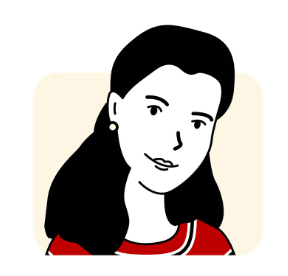
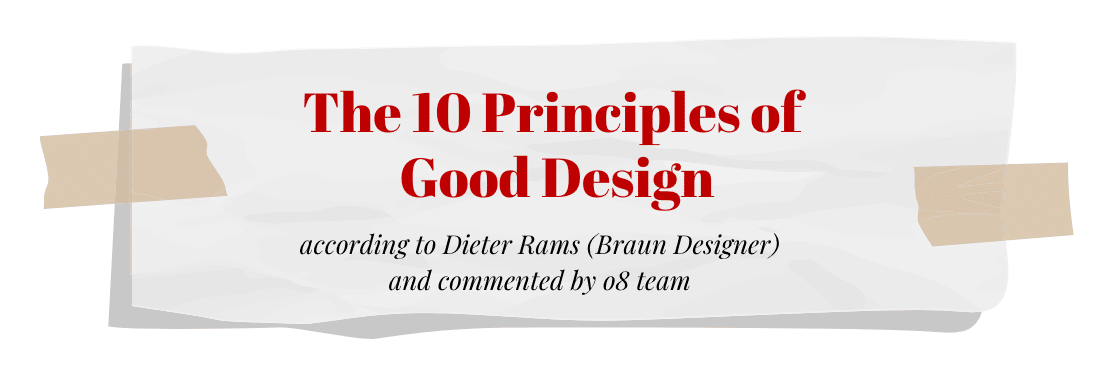






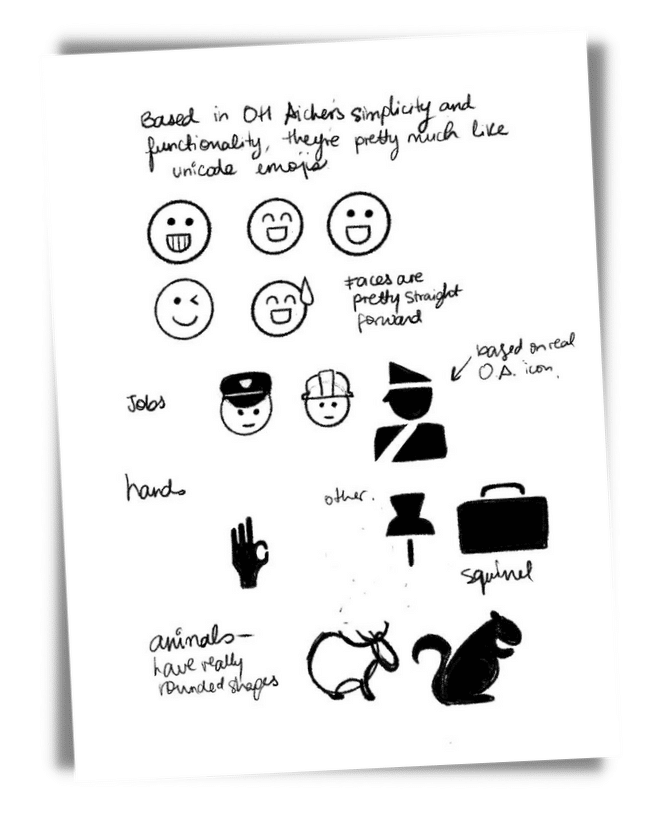
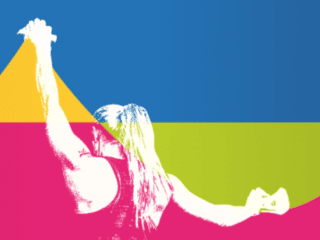

Leave a Reply